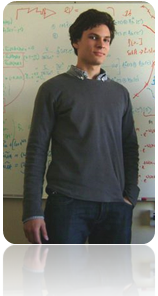Janos Perczel, an undergraduate student, has resolved a main problem in the production of invisibility cloaks by integrating an optical device into the invisibility cloak’s design.
 Janos Perczel
Janos Perczel
The integrated optical device called invisible sphere maintains its invisibility, while decelerating light that advances towards a potential cloak. Earlier, the light rays have to be accelerated at high speeds towards the potential cloaked objects. This requirement had restricted the function of invisibility cloaks in a particular region of the visible spectrum.
Janos Perczel, a student of the University of St Andrews, has developed the new method under the direction of Ulf Leonhardt. The typical method of developing an invisibility cloak utilizes unique materials to bend light around the object to be concealed, thus stopping the light from striking the object and exposing its existence to the observer.
The object is engulfed during bending of the light, which can travel more than its normal speed only under specific conditions. This causes invisibility cloaks to function in a narrow portion of the spectrum, in only a single color. This would be perfect in case a person decides to remain still in camouflage. However, if the person begins to move, the background will get distorted, thus exposing the person under the cloak.
By decelerating the light rays approaching the potential cloak using the invisible sphere, the requirement to accelerate the light rays at high speeds can be avoided. This allows the cloak to function in all portions of the spectrum.